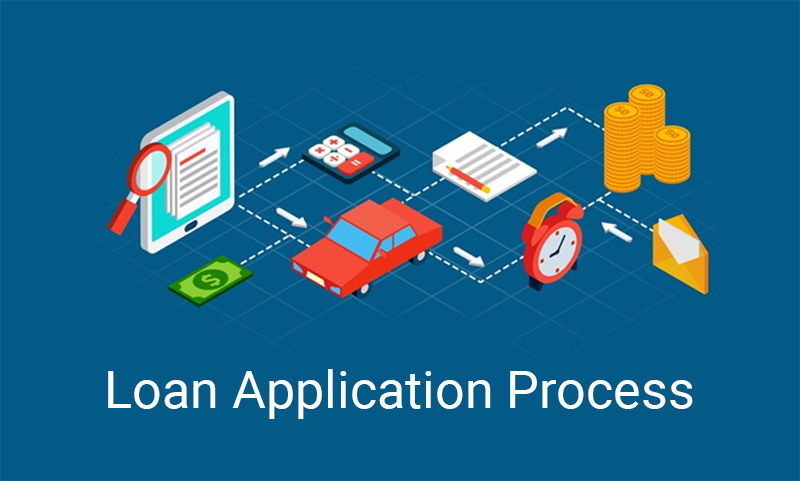Applying for a loan can feel daunting, especially if you’re unfamiliar with the process. Whether you’re seeking a personal loan, a home loan, or a business loan, understanding the steps involved can make the journey smoother and increase your chances of approval. This guide will walk you through the loan application process, from preparing your documents to getting approval.
Step 1: Understand Your Loan Options
Before you start the application process, it’s crucial to determine which type of loan fits your needs. Common types of loans include:
- Personal Loans: Unsecured loans for various purposes, such as debt consolidation or medical expenses.
- Home Loans: Secured loans for purchasing or renovating a home.
- Auto Loans: Financing specifically for buying a vehicle.
- Business Loans: Loans to fund business operations or expansion.
- Student Loans: Financial aid for education expenses.
Each loan type comes with its own terms, interest rates, and requirements. Research thoroughly to understand the options available and select the one that best suits your goals.
Step 2: Check Your Eligibility
Loan eligibility criteria vary by lender and loan type, but some common factors include:
- Credit Score: A good credit score (typically 650 or above) increases your chances of approval.
- Income: Lenders assess your income to ensure you can repay the loan.
- Debt-to-Income Ratio: A lower ratio indicates financial stability and improves approval odds.
- Employment Status: Stable employment history is often a key requirement.
Use online eligibility calculators to assess your standing before applying.
Step 3: Gather the Required Documents
Preparing the necessary documents in advance can speed up the application process. Commonly required documents include:
- Proof of Identity: Passport, driver’s license, or government-issued ID.
- Proof of Address: Utility bills, rental agreements, or property documents.
- Proof of Income: Salary slips, tax returns, or bank statements.
- Credit Report: A detailed report of your credit history.
- Loan-Specific Documents: Depending on the loan type, additional documents may be needed, such as property papers for a home loan or a business plan for a business loan.
Check with your chosen lender for their specific document requirements.
Step 4: Compare Lenders and Loan Offers
Not all lenders are the same, so take time to compare options. Key factors to consider include:
- Interest Rates: Fixed or variable rates can significantly impact repayment amounts.
- Fees and Charges: Look for hidden costs like processing fees, prepayment penalties, or late fees.
- Loan Tenure: Choose a tenure that balances manageable EMIs (Equated Monthly Installments) with overall interest costs.
- Customer Reviews: Research lender reviews to understand their reliability and customer service quality.
Using online comparison tools can simplify this process and help you find the best deal.
Step 5: Submit Your Application
Once you’ve chosen a lender, it’s time to apply. Many lenders offer both online and offline application options. Follow these steps:
- Fill Out the Application Form: Provide accurate personal and financial details.
- Upload/Submit Documents: Ensure all required documents are complete and legible.
- Pay Processing Fees: Some lenders charge a nominal fee to process your application.
Double-check your application for errors before submitting to avoid delays.
Step 6: Await Verification and Approval
After submission, the lender will review your application. This typically involves:
- Verification of Documents: Lenders verify the authenticity of the documents provided.
- Credit Check: Your credit score and history are evaluated.
- Assessment of Repayment Capacity: Lenders analyze your income and debts to gauge your ability to repay the loan.
Approval timelines vary. Personal and auto loans may take a few days, while home or business loans can take weeks due to additional checks.
Step 7: Review the Loan Offer
If your application is approved, the lender will issue a loan offer detailing:
- Loan Amount: The sanctioned amount may differ from what you requested.
- Interest Rate: Ensure the rate matches your expectations.
- Repayment Terms: Check the tenure, EMI, and repayment schedule.
- Additional Fees: Confirm any charges included in the offer.
Carefully read the terms and conditions before accepting the loan offer.
Step 8: Sign the Loan Agreement
Once you’re satisfied with the offer, sign the loan agreement. This legally binds you to the terms of the loan. Ensure you:
- Understand the Penalty Clauses: Know the consequences of late payments or defaults.
- Clarify Prepayment Terms: Check if there are penalties for early repayment.
After signing, the loan amount is usually disbursed to your account within a specified timeframe.
Tips to Improve Your Loan Approval Chances
- Boost Your Credit Score: Pay off existing debts and ensure timely payments to improve your score.
- Reduce Your Debt-to-Income Ratio: Lower your current debts before applying.
- Choose the Right Loan Amount: Apply for a realistic amount that aligns with your income.
- Have a Co-Applicant: Adding a co-applicant with a strong credit profile can strengthen your application.
Common Mistakes to Avoid
- Incomplete Application: Missing details or documents can lead to rejection.
- Applying to Multiple Lenders Simultaneously: This can negatively impact your credit score.
- Overlooking Fine Print: Ignoring terms and conditions may lead to future financial strain.
- Borrowing Beyond Your Means: Over-borrowing can result in repayment difficulties.
Conclusion
The loan application process, while detailed, is manageable with proper preparation. By understanding your loan options, gathering the necessary documents, and choosing the right lender, you can secure a loan that meets your needs with minimal stress. Remember to be thorough, honest, and patient throughout the process. A well-planned application increases not only your chances of approval but also your confidence in managing the loan effectively.
